Robotics Education Journal
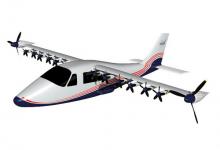 06/17/2019
06/17/2019 Empirical Systems Aerospace, Inc. (ESAero), a leading Unmanned Aerial Systems (UAS) and Urban Air Mobility (UAM) System design, development and manufacturing services provider announced today a Small Business Innovation Research (SBIR) Phase II Award from NASA. The award, currently in negotiation, is under NASA Topic A1.06 for Vertical Lift Technology and UAM.
 06/10/2019
06/10/2019 Researchers at the University of Massachusetts, Amherst, recently undertook a life cycle assessment for training large AI models. Surprisingly, they found that some of these models could emit more than 626,000 pounds of carbon dioxide equivalent, or close to 5 times the lifetime emissions of the average American car—including emissions during the manufacture of the car.
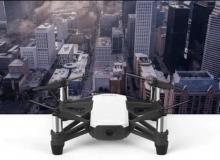 06/03/2019
06/03/2019 As noted by Miriam McNabb on Dronelife.com today, June 3, 2019, “Through IBM’s Code and Response initiative, along with non-profits, aid agencies, and local governments, IBM is putting open source technologies developed as part of coding challenges such as Call for Codein the communities where they are needed most,” says IBM “With this in mind, we have launched the IBM Developer Drone Giveaway to empower more developers to leverage drone-related code patterns, get up-and-running on IBM Cloud and inspire more entries to Call for Code, which is open to submissions until the end of July.”
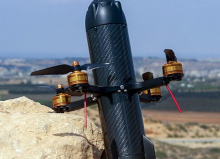 05/31/2019
05/31/2019 If an apparently hostile drone appears to be threatening some sort of attack, the “DroneBullet” offers a swift solution; it will outmaneuver and then destroy the offending UAV by ramming it at high speed.
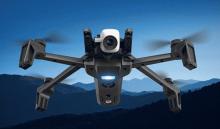 05/29/2019
05/29/2019 In a significant step, the U.S. DoD has noted that it is working with Parrot on a project to develop the next generation drone for the U.S. military. Well known in the industry, Parrot has been a pioneer in drone technology for the private sector for many years.
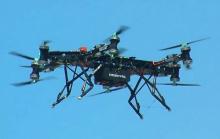 05/26/2019
05/26/2019 Boeing’s CAV UAV, years in development, will soon lift 500-pound cargo payloads (227 kilograms) in urban settings. Boeing has described the CAV UAV as an “unmanned electric vertical-takeoff-and-landing (eVTOL) cargo air vehicle (CAV) prototype.” Since its unveiling in early 2018, the design has been refined through extensive testing and simulations. The aircraft uses 6 dual-rotor motor pods, 12 propellers and weighs 1,100 pounds (498.95 kilograms). CAV is 17.5 feet long (5.33 meters), 20 feet wide (6.1 meters) and 5 feet tall (1.52 meters). Current plans foresee autonomous flights much if not most of the time.
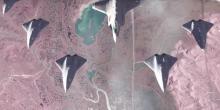 05/15/2019
05/15/2019 Human-machine teaming is a hallmark of the Pentagon’s “Third Offset Strategy”, which has guided weapons development since November 2014, when the military announced a strategy that would employ autonomy and artificial intelligence. Deputy Defense Secretary Bob Work championed this approach, Defenseone.com notes. The bottom line was the notion that humans properly paired with machines will outfight machines, as well as humans. Does this sound a bit like sci-fi?
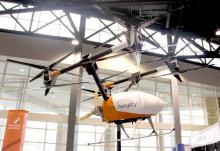 05/08/2019
05/08/2019 Only a year ago, as an independent contractor, Bobby Watts of Watts Innovations flew a proof of concept prototype of the new Aergility Atlis multirotor design. The prototype used a Scorpion motor-powered pusher from Innov8tive Designs, and the bank of rotating blades atop the vehicle, a hallmark Aergility innovation, acted as “flat plate” airfoils, providing lift. Bobby then posted the following enthusiastic note on the Watts Innovations website:
“We recently worked with Aergility to help tell their story of a new type of aircraft that they developed that solves the traditional problem of short flight time that plagues all multirotor aircraft. Their new aircraft is an exciting piece of technology that will allow it to carry a heavy payload and fly for hours/ hundreds of miles all on a single tank of fuel. Watts Innovations is extremely excited to be a part of this and wish the Aergility team nothing but success in their new endeavor! For more information, check out: www.Aergility.com”
We were thrilled to visit the Aergility booth at the recent Xponential 2019 conference and trade show hosted by the AUVSI in Chicago. Aergility has taken the multirotor concept to an entirely new level.
Jim Vander Mey, Aergility CEO, notes in the short YouTube video linked to below, shot by Bobby Watts, that he started the project many years ago when he was considering how to find a more functional VTOL aircraft that did not have the complexity of a helicopter. Jim describes how he conceived a design that would do exactly that.
 05/04/2019
05/04/2019 The National Robotics Education Foundation (NREF) has captured an expansive photo gallery of Xponential 2019, and, as in past years, it will take a little bit of time to edit and post the hundreds of images that represent this leading-edge technology event. We will post a few show scoops in advance to portray the amazing diversity of robotics and AI technologies exhibited at this latest conference and trade show. Check out this mock-up of the amazing BELL Nexus full-size, person carrying multirotor!
 04/26/2019
04/26/2019 A new lithium-ion battery breakthrough was recently demonstrated by CUBERG. A video shows a quadcopter using CUBERG’s new lithium metal battery flying 70% longer than one powered by a traditional lithium-ion battery. CUBERG is supported by Boeing, the U.S. Department of Energy and venture capitalists. The battery uses a new non-flammable electrolyte that lacks many of the weaknesses of traditional Li-ion chemistry batteries; the company notes that previous generation lithium ion cells are “heavy, they underperform and are vulnerable to rapid degradation.”
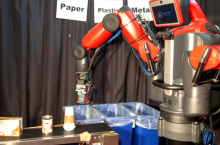 04/24/2019
04/24/2019 MIT and Yale University researchers have developed humanoid waste sorters that rely on touch, not vision, to pick and place. Able to differentiate between paper, glass and plastic using “soft robotics and sensors,” the system utilizes a gripper made of a material called auxetics, which expands when pulled. The robot identified objects with 85% accuracy working from a fixed position, but that lessened to 63% when picking from a moving conveyor belt.
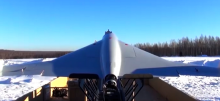 04/19/2019
04/19/2019 Veteran Russian AK-47 manufacturer Kalashnikov has introduced a new drone named the KUB. Kalashnikov’s distinguished firearms history suggests that the company would pull out all the stops if it chose to enter the market with a weaponized drone. The KUB is said to be able to precisely deliver a 3-kilogram warhead to a target more than 40 kilometers (25 miles) away. Shown in Abu Dhabi at the February IDEX 2019 arms show, the drone was said to be able to fly for 30 minutes at 80 to 130 kilometers per hour (49.7 to 80.7 mph). Kalashnikov notes that the KUB is low-cost, highly efficient and well-equipped to evade aerial defenses.
 04/11/2019
04/11/2019 The Israeili-built, privately funded Beresheet moon lander failed, today when its handlers lost communication with the robot when it was approximately 489 feet above the lunar surface. "We had a failure in the spacecraft, we unfortunately have not managed to land successfully," Opher Doron, the general manager of IAI said during a live broadcast from mission control. "It's a tremendous achievement up 'til now."
 04/09/2019
04/09/2019 The following story is excerpted from the Beresheet website. The Beresheet (Hebrew for "Genesis") Lunar Lander is a joint venture between the Israeli nonprofit SpaceIL and Israel Aerospace Industries, funded almost entirely by private donations from well-known Jewish philanthropists. SpaceIL was founded in 2011 to compete in the Google Lunar XPrize, a program that planned to award $30 million to the first privately funded team who could build a spacecraft and land it successfully on the moon. Beyond landing, the spacecraft, or a rover, had to travel a distance of 500 meters or more and beam high-definition imagery of the landing environment to Earth. The Google Lunar XPrize contest deadline ended in 2018 without a winner. Undaunted, SpaceIL forged ahead with the development and construction of the spacecraft.
Spaceflight also managed the launch of the two secondary payloads: Beresheet, an Israeli non-profit SpaceIL's lunar lander, and S5, an experimental small satellite of the US Air Force Research Laboratoy (AFRL) with a mass of 180 kg.
"It is a small and smart spacecraft," said SpaceIL CEO, Ido Anteby. "1.5 meters by 2 meters in size, weighing 600 kilograms at the time of the launch. Most of the weight is fuel – upon landing, the spacecraft's weight will have reached 180 kilograms. The spacecraft will be in touch with several ground stations on Earth and throughout its entire journey, we will maintain radio contact with it."
The website explains that] The spacecraft's elliptical orbit will gradually grow, until it encounters the Moon's orbit, where it will activate its motors to slow down and enter orbit around the Moon.
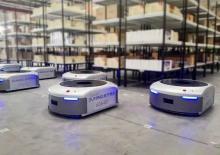 04/04/2019
04/04/2019 Geek+ (Beijing Geekplus Technology) has raised over $239 million, $150 million in 2018, to continue scaling up. A dynamic company, Geek+ employs more than 600 people. The company has developed logistics robot products working with Alibaba, Suning and China Post. It has installed systems all over China, SE Asia, Japan and the EU.
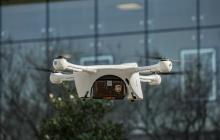 04/01/2019
04/01/2019 Announced last week, the first FAA-sanctioned use of a drone for routine “revenue flights” involving contractual medical product delivery was approved for a hospital system in Raleigh, N.C. “The program is taking place at WakeMed’s flagship hospital and campus in the Raleigh, N.C., metropolitan area, with oversight by the Federal Aviation Administration and North Carolina Department of Transportation.”
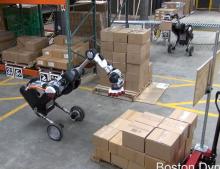 03/29/2019
03/29/2019 Melissa Locker of Fastcompany.com reported on this latest box-handling robot, which to this editor’s eyes resembles a biomimetic extrapolation of a tireless ostrich. Locker notes that it is an updated version of the company’s “Handle” robot. It is said to be able to autonomously seize and stack boxes weighing up to 33 pounds. It can place them on conveyor belts as well, using its vision system.
 03/28/2019
03/28/2019 Commercial UAV Expo Europe reported on PRWeb that the commercial drone market, which currently produces 16 billion euros in revenue, is projected to grow to 38 billion euros by 2024. Energy, construction and agriculture are expected to continue leading the economic sectors benefiting from drone commercialization.
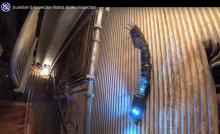 03/23/2019
03/23/2019 The SARCOS Guardian S snake robot crawls into dangerous, difficult and dirty spaces where humans should never go, and then inspects the environment using the latest multi-spectral sensors and 4K recording gear. The Guardian S is shown scaling a corrugated, pipe-covered metal wall using magnetism to adhere to the surface. Exploring hazardous environments is where this robot is the most comfortable.
 03/15/2019
03/15/2019 Tom Green is a consultant, author, and leading commentator in the robotics, AI and automation industries. He founded AsianRoboticsReview.com to report on the remarkable efflorescence of technology now bursting forth in Asia. In his words, AsianRoboticsReview.com chronicles “two simple yet powerful Asian-centric transformations: 1. The rapid transformation of Asia’s industry and economy driven by exponential advances in robotics and robot-driven automation; and 2. The Fourth Industrial Revolution, with Asia as its epicenter.” Tom’s interviews with robotics luminaries are not to be missed, and we highly recommend his report on his recent conversation with Dr. Djitt Laowattana (The Godfather).
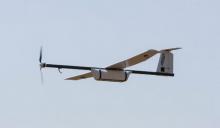 03/12/2019
03/12/2019 DroneCare is a subscription service offered by San Francisco-based Aero Systems West (ASW). The service offers industrial grade multi-rotor and fixed-wing UAS, training, long-term support, maintenance, upgrades and accident protection. Aero Systems West will provide end-to-end drone package delivery working with Drone Delivery Systems and Air Box Technology.
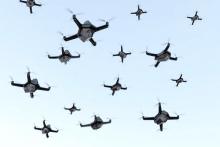 03/08/2019
03/08/2019 Chloe Taylor of CNBC reported this week that Britain’s army will invest $44 million by year’s end in a fleet of tiny drones that can fit in your hand. The investment is an initiative to increase the robotics capabilities of the British military. Funding will come from a £66 million cash injection from the U.K.’s Ministry of Defence.
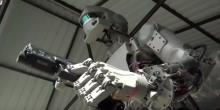 03/05/2019
03/05/2019 In a DefenseOne.com report by Paulina Glass and contributing editor Patrick Tucker, it was noted that the pistol-packing Russian humanoid robot, FEDOR, has been abandoned by Western parts suppliers following a YouTube video that went viral.
 03/02/2019
03/02/2019 Our satellites are among the most sophisticated of the robotics systems created by humanity. Countless commercial and military organizations depend on satellite constellations that orbit Earth. What if all of our satellites, and those of allied countries, were targeted for destruction in a future war? Conservative journalist Mark Levin, whose programs on Blaze TV we highly recommend, has dedicated a sobering episode to the topic of space war. Mark highlights China’s aggressive posture in this context and the current lack of preparedness of the U.S. and its allies. This is a must-see presentation.
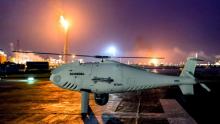 03/01/2019
03/01/2019 Kongsberg Geospatial’s IRIS UAS software is being used to safely pilot a large drone at long distances for beyond-visual-line-of-sight (BVLOS) night time gas pipeline inspection in Nigeria. Kongsberg Geospatial provided the airspace visualization software that allowed the aircraft to be safely piloted at ranges of up to 200Km BVLOS.
